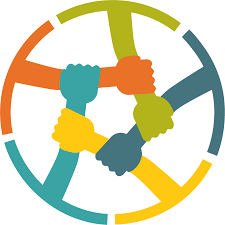
In the usual working methodology in schools, teachers are the ones who impart knowledge and students are the ones who listen. But there is another way of doing things.
What are they?
Learning communities can be defined as a group of people who learn together, using the same tools and in the same environment. It is a proposal for educational transformation, which seeks to improve learning and coexistence, as it involves all the people who, directly or indirectly, influence the learning and development of students, including teachers, family members, friends, neighbours, members of associations, organisations, volunteers, etc. Its aim is to bring about a change in educational practice in order to achieve the school that everyone would like to have and to make the dream come true that no child can remain marginalised.
Benefits
Learning communities help to tackle various problems related to the environment, school failure or conflict resolution among students. They also bring other benefits related to values such as teamwork, more active and cooperative learning and increased student motivation in the acquisition of knowledge.
One of the central aspects is interaction and the promotion of the development of critical and reflective thinking.
History
The introduction of this type of educational project is relatively recent in Spain.
The first learning community originated in the Adult Education School of La Verneda, in Sant Martí (Barcelona), in 1978. It was created because of the need of this Barcelona neighbourhood to have a cultural centre for adults.
Years later, in 1991, the Centre for Research in Theories and Practices to Overcome Inequalities (CREA) of the University of Barcelona carried out a project with the same educational objectives as the learning communities, but going one step further: to overcome school failure and improve coexistence among students. The aim of the project was to transfer the model to all levels of education: infant, primary and secondary. This led, some time later, to the creation of the first learning community in a primary school in the Basque Country: CEIP Ruperto Medina, in Portugalete (Vizcaya).
How they are applied
The formation of Learning Communities takes place in several phases:
- Awareness-raising: Continuous training sessions where the information society in which the knowledge that will be needed to work is explained and discussed.
- Decision-making: The transformation project is initiated and is elaborated jointly and dialogically by all the sectors that want to participate in it.
- Dreams: Proposals of objectives among all participants.
- Priorities: Analysis of the proposals that emerged in the previous stage for their real application in the educational centre.
- Planning: Creation of an action plan to carry out the project.
Students organise themselves into teams of four or five with different knowledge to carry out an activity with the aim of promoting interactions and different points of view on the same topic.
These groups are led by an adult (a teacher, family member or volunteer) who is in charge of tutoring the whole activity. In this way, a teacher does not meet a large group of students, but several adults are in the classroom sharing different tasks. Their different points of view enrich the work of the students, who learn to share different visions and approaches to a given situation. They have the possibility to develop their critical spirit and to become more understanding people as they grow up. Learning communities can be a good instrument to start building the future of young people.